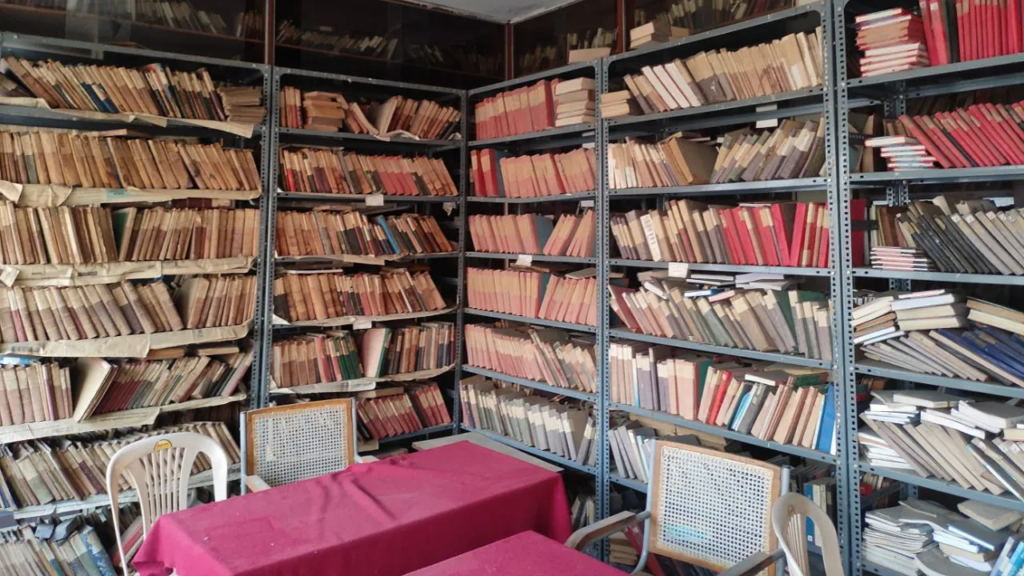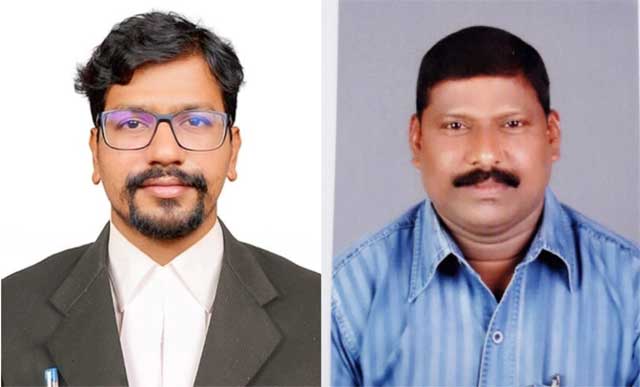NEW DELHI :

Aasif Mujataba with Violence Affected kids
On February 16, 2024, 36-year-old Sajida, a mother of six, received the most
devastating news of her life. Her husband, Mohammad Junaid, the sole breadwinner
of the family, along with his cousin, Nasir, had tragically passed away. They were
brutally killed in a premeditated attack by cow vigilante goons. She was horrified to
learn that her husband had been taken from them in such a cruel manner. She
struggled with disbelief and fury, trying to grasp that the father of her children was
gone.
The accused had meticulously planned the murders, discussing Junaid and Nasir
extensively in the weeks leading up to the incident, ultimately agreeing on their
killings.
“It was devastating news for all of us. I can never forget that day. At first, I could not
believe it. Junaid was the most humble person in our locality. He always helped
everyone and was so full of life. Everyone liked him, and I was so proud of him. He
never fought with anyone. How could someone take his life? How can their
conscience allow it? Don’t they fear the wrath of God?” she asked in disbelief,
surrounded by her small children.
Over the past decade, incidents of lynchings targeting Muslims in India have seen a
significant increase, accompanied by a normalization of hate speeches. In 2023, the
country witnessed 668 hate speeches directed at Muslims, according to the India
Hate Lab, a Washington DC-based group. Their report titled ‘Hate Speech Events in
India’ revealed a rise from 255 events in the first half of the year to 413 in the latter
half, marking a 62% increase.
Approximately 75% of these incidents occurred in states and Union Territories
governed by the Bharatiya Janata Party (BJP), including Delhi. Among them, 36%
involved direct calls for violence against Muslims, 63% referenced conspiracy
theories like love jihad and population jihad, and 25% called for targeting Muslim
places of worship.
Amnesty International’s report titled ‘Bulldozer Injustice in India and JCB’s Role and
Responsibility in Bulldozer Injustice in India’ documented the demolition of at least
128 properties between April and June 2022. These demolitions have left at least
617 people homeless or deprived of their livelihoods.
The report underscores that, authorities in Assam, Gujarat, Madhya Pradesh, Uttar
Pradesh and Delhi utilized demolitions as a form of punitive action following
instances of religious violence or Muslim protests against discriminatory government
policies. The BJP, led by Prime Minister Narendra Modi and accused of anti-Muslim
rhetoric, governs four of these states.
Amidst the demolitions and suppressions, most of the NGOs working for public
welfare are hesitant to assist Muslims due to fear of repercussions and opposition
from the government.

Junaid’s wife Sajida (in blue). Photo: The Quint
Recognizing the disparities in NGO assistance towards Muslims and their hesitance
to aid those oppressed by the state, Aasif Mujtaba, a 35-year-old IIT alumnus,
took initiative and established his own organization, Miles2Smile. His goal is to
rehabilitate and support Muslims affected by violence.
“Following the communal in northeast Delhi in 2020, my colleagues and I felt
compelled to aid the survivors. Initially, our focus was on providing essentials like
clothing, medical care and food. In Babu Nagar, we established our first command
centre, which evolved into a relief hub. It was our first experience supporting
victimized survivors, and despite lacking a formal name initially, our determination to
assist remained unwavering,” Aasif told TwoCircles.net.
On February 23, 2020, violence erupted in Delhi’s trans-Yamuna region, spanning
several days and resulting in the deaths of 53 people, predominantly Muslims, with
250 others injured. Despite government and media characterizations of the incident
as a “riot”, a fact-finding committee from the Delhi Minorities Commission concluded
it was a “pogrom”. This independent body, dedicated to safeguarding minority rights,
based its assessment on victim testimonies and legal sources, affirming that the
events of February 2020 constituted a pogrom.
Aasif recalled that while Miles2Smile was officially established in June 2020, its
origins can be traced back to providing relief to survivors of the violence in northeast
Delhi earlier that year. Since then, the organization has remained steadfast in its
mission.
During the COVID lockdown, Aasif and his team began compiling a list of students
affected by the violence, many of whom had dropped out of school due to lost
income or the absence of a breadwinner. This list grew to include over 200 students.
His organisation took on the task of reintegrating these children into schools and
subsequently, in September 2020, launched its sister organization, Shaagird, which
means “student”.
However, admitting the students was relatively straightforward compared to the
challenge of keeping them enrolled and motivated. Many had witnessed the violence
firsthand, and some had tragically lost family members in front of them at a young
age. Therefore, the approach to enrolling and sustaining their engagement in formal
education had to be tailored and sensitive to their unique circumstances.

Haris with violence affected kids is below
Mohammad Haris, chief operations officer at Shaagird, who works closely with
students affected by violence, expressed, “These children are deeply traumatized.
Many have lost their enthusiasm for education, especially those approaching
adolescence who feel compelled to contribute to their families financially. Keeping
them engaged in formal education is an immense challenge.”
A study published in the journal Review of Behavioral Economics titled ‘Child Abuse,
Sexual Assault, Community Violence and High School Graduation’ found that girls
who had experienced childhood violence were 24% more likely to drop out, while
boys who had experienced violence were 26% more likely to drop out compared to
their peers.
Recognizing the impact of trauma on students’ educational motivation, Shaagird
developed a curriculum specifically designed to provide emotional support and
solace. Initially, students focus on co-curricular activities such as sports and painting
rather than academic subjects. As they gradually become more engaged with the
school environment, core subjects are reintroduced, all while closely monitoring their
mental health needs.
“It’s incredibly challenging to keep children affected by violence in school. Due to
their trauma, we don’t initially focus on academic subjects like math, science, or
English, which can overwhelm them. Instead, we have developed a specialized
curriculum that identifies each student’s unique talents and keeps them engaged
through these interests. This approach helps them form a stronger connection to the
school. Only once they are fully engaged and comfortable do we gradually introduce
academic subjects,” explained Haris.
An illustrative case at Shaagird is Anas (name changed), who tragically lost his
father in the pogrom and has a deep passion for drawing and art. The Shaagird team
actively encourages Anas to explore and express his creativity through drawing, with
Haris expressing confidence in Anas’s promising future in painting.
According to Aasif, beyond immediate rehabilitation efforts for families affected by
communal violence, ensuring their long-term welfare is crucial. Families endure
immense suffering after such violence, losing sources of income, breadwinners and
leaving children traumatized. Therefore, empowering them to become self-reliant is
essential, as they are often overlooked by relief organizations or volunteers over time.
This goal is achieved through educating the children of affected families and
involving them in small businesses that provide sustainable livelihoods.
“What families endure during the pogrom is only a fraction of their challenges
afterward. It’s imperative to support these families in becoming self-reliant. At
Miles2Smile, we consistently engage families affected by pogroms and other forms of
state oppression in small businesses, such as setting up kirana shops, to help them
earn a livelihood,” explained Aasif.

(Anas name changed)
In addition to assisting over 10,000 individuals affected by violence last year through
rehabilitation and relief efforts, and enrolling hundreds of violence-affected students
for free education, Miles2Smile also responded to the 2023 Turkey earthquake by
sending 2,365 metric tonnes of emergency relief. This included tents, thermal
mattresses, blankets, clothing, sanitary napkins, baby diapers, baby food, overcoats,
snow boots, chairs, sleeping bags, towels, and inflatable pillows.
Inspiring Rehabilitation Stories
Among the many rehabilitations, some stories stand out where families affected by
lynchings or pogroms displayed exceptional courage and began new lives with
determination. One such story is that of Sajida, the wife of Junaid. Despite being
illiterate and a young mother of six, she showed remarkable bravery by starting a
small cosmetics shop set up by Miles2Smile in one of the rooms of her home.
Although initially in disbelief over Junaid’s death, she quickly accepted her fate and
forged ahead courageously.
“Sajida is one of the bravest women I’ve encountered in this journey. Young widows
often struggle to accept their circumstances, but Sajida embraced hers and began
anew with courage. We often wondered how a young woman with six children would
manage, but her resilience is beyond words. Women like Sajida continue to inspire and motivate us,” remarked Aasif.

Sajida, along with her brother and son, at Sadar Bazar, Delhi shopping cosmetics and other women’s
items for her shop. Photo: Miles2Smile
“I faced two choices: either break down or muster the courage to start anew for my
children, and I chose the latter. I knew that if I lost hope, my children would suffer
greatly. I had to do it for them. Aasif Bhai provided me with immense emotional and
financial support. His team set up the entire shop and supplied the items. Now, the
shop is running well, thanks to Allah first and then Aasif Bhai, who did so much for
me,” shared Sajida.
Another poignant and inspiring story is that of Rukhsana, the wife of Feroz Ahmed,
who owned a dupatta house and tragically lost his life during the Northeast Delhi
pogrom. His body was later discovered in a nearby drain. Rukhsana was two months
pregnant at the time of Feroz’s death.
Throughout her pregnancy, Miles2Smile covered all her medical expenses and
provided support by accompanying her to regular checkups. Meanwhile, the
organization enrolled her children in school at no cost, taking care of their
educational expenses. After giving birth to a baby girl, whom she named Feroza after
her father, Rukhsana successfully revived and managed the shop. Within a year or
two, she began employing more young women, and now nearly ten girls work under
her at her dupatta house.

Rukhsana’s daughter at Miles2Smiles owned Sunrise Public school. Photo: Miles2smile
“I was moved to tears when Rukhsana brought me small polythene bags filled with
cash. She explained that since Miles2Smile had supported her children for years by
covering their school fees, this was her way of expressing gratitude. It brought me
immense joy. These are the stories that inspire and drive us to persist in our
mission,” said Aasif.
source: http://www.twocircles.net / Two Circles.net / Home> India News> Lead Story / by Mohammad Aatif Ammad Kanth, TwoCircles.net / July 14th, 2024



























